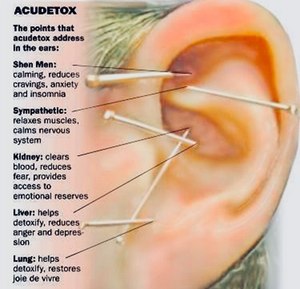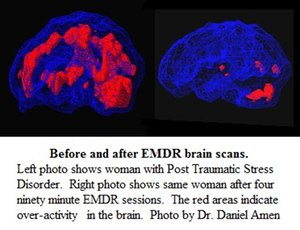Read the Articles
Two effective jail-based mental health interventions to reduce crime
Article Summary
Broadly, the mission of the United States criminal justice system is to reduce crime and increase public safety. Thus, the most obvious obstacle it faces is the persistence of crime. Recidivism, defined as a “relapse into criminal behavior after the person receives sanctions or undergoes intervention for a previous crime,” [1] occurs at alarming rates and places an undue burden on patrol officers and corrections staff alike.
A 2018 study by the National Institute of Justice that tracked more than 400,000 individuals for nine years post-release from incarceration suggests approximately 44% of inmates will re-offend within one year of release, 68% within three years, and a staggering 83% within nine years. [2] It is no secret that substance abuse and criminal behavior correlate closely. The National Institute on Drug Abuse reports an estimated 85% of the prison population has an active diagnosis of substance use disorder or is incarcerated due to substance use. [3] These outcomes are clearly unacceptable and represent a direct threat to public safety.
Strategies to avoid relapse and recidivism (STARR)
In 2018, Colorado’s Summit County Sheriff’s Office implemented a new program to confront this issue. Known as Strategies to Avoid Relapse and Recidivism (STARR), the core mission of the program team is to improve outcomes related to mental health, substance use and associated criminal activity.
In each of Colorado’s 64 counties, jail-based behavioral services are statutorily mandated and typically provided by contracted clinicians from local community mental health centers. Sheriff Jaime FitzSimons, a stalwart supporter of improving mental health outcomes and reducing recidivism throughout his 33-year policing career, saw this arrangement was ineffective and becoming a barrier to providing optimal care to inmates in the Summit County Detention Facility.
FitzSimons successfully lobbied the Colorado Behavioral Health Administration to receive approval and funding for the creation of an in-house mental health team for inmates. The staff includes a licensed clinician, clinical case manager and program manager who is a sworn lieutenant, as well as a directly contracted psychiatric medication provider.
While data from STARR’s internal program assessment is not yet available, it appears clear that outcomes have improved. Use-of-force incidents in the jail, as well as inmate assaults on deputies, are trending downward, while standards of care, clinical outcomes and linkages with the most effective clinical services trend upward.
FitzSimons’ creative solution has clearly led to more effective delivery of mental health services by increasing the ability to offer advanced interventions, reduced wait times for services and improved communication among providers and jail staff. STARR is excited to share some of the unique clinical services currently provided in the Summit County Detention Facility.
Needles in the ear demonstrate benefit
Nationally, only about 9.5% of individuals – both with and without criminal records – receive therapy from a counselor. [4] In the Summit County Detention Facility, 42% of inmates are actively receiving voluntary mental health services. To increase engagement with mental health programs, STARR looked at existing barriers identified by inmates. Inmates reported three primary reasons for refusing mental health treatment:
- Distrust or skepticism toward mental health as a whole;
- Language barriers;
- Inability to regulate behavior and emotions sufficiently to engage in therapy sessions.
In response, STARR identified and implemented a cutting-edge intervention few practitioners offer: Acudetox. Also known as auricular acupuncture, Acudetox is a technique that involves the insertion of five tiny needles into specific points on each ear. The treatment has been shown to greatly reduce anxiety and anger, promote relaxation, diminish cravings for substance use (especially among opiate and nicotine users), improve sleep and increase motivation for further treatment.
Acudetox is extremely time- and cost-effective, lasting only 30-40 minutes with supplies that cost less than a dollar per treatment. Moreover, it is one of the only evidence-based practices that can be administered despite the existence of a language or cultural barrier, skepticism toward mental health treatment or lack of trust in the provider, all of which typically contribute to negative outcomes.
Acudetox is an entirely nonpharmacological intervention, minimizing the risk of dependency and abuse, but it can be used in conjunction with any psychiatric medication, including those for medication-assisted treatment such as Suboxone and methadone. Extensive research supports the efficacy of Acudetox for a range of disorders, as recognized by the Substance Abuse and Mental Health Services Administration (SAMHSA). [5]
Without the bureaucratic hurdles associated with contracted service providers, STARR has been able to train all clinical staff to administer Acudetox. Not only does Acudetox help reduce symptoms more rapidly, but deputies also report reduced misbehavior among inmates who receive the treatment (see Figure 1). Many STARR clients have reported a lasting effect, saying Acudetox helps them remain substance-free after release by continuing to reduce cravings, offering healthier ways to relax and increasing confidence in the effectiveness of mental health professionals. One client said, “Acudetox went a long way to building my faith in the basic idea of therapy because it actually worked and made me feel better right away, unlike everything else I tried.”

EMDR prompts quick behavioral changes
An increase in optimism regarding treatment outcomes among STARR clients is pivotal to the team’s delivery of another life-changing intervention rarely offered in correctional facilities: eye movement desensitization and reprocessing (EMDR).
This state-of-the-art therapy can bring about radical and rapid behavioral change by working with a client’s subconscious mind. It involves a series of eye movements called bilateral stimulation, which connects both hemispheres of the brain and helps the individual adjust dysfunctional emotions and behaviors, particularly those related to post-traumatic stress disorder (PTSD). PTSD is the disorder most closely correlated with criminal thinking and behavior, especially aggression and violence toward perceived threats. [6] Incarcerated individuals in the United States are 10 times more likely to have experienced an objectively traumatic event and are confined in facilities that increase their risk for developing or worsening PTSD symptoms. [6]
Treating PTSD is difficult because the symptoms themselves pose significant barriers to effective therapy. Traditional talk therapy requires clients to regulate their emotions well enough to sit still and have conversations, establish trust with the provider and verbalize traumatic events. All these skills are difficult or impossible for the traumatized brain, and attempting them can be highly retraumatizing.
In contrast, EMDR is designed to help the brain resolve unprocessed memories by enhancing our natural ability to recover from trauma. It offers an almost-immediate reduction in an overactivated central nervous system without demanding the client verbalize details of the distressing event. This therapy guides the brain in better understanding and naturally processing memories, facilitating deeper healing. The events are still remembered, but the dysfunctional reactions – startle response, anger, violence, the urge to run, hide or numb out – are no longer coded with the memory. The duration of this process is far shorter than other trauma therapies, and most clients report observing positive changes after the first session. Figure 2 depicts a brain scan that shows a drastic reduction in activation after just four EMDR sessions. [7]

Another salient distinction of EMDR is its capacity to help clients manage symptoms in the long term. Most mental health treatments, including most psychiatric medications, focus on coping with the problem. Coping skills from other therapies work only in specific situations and require a conscious application. EMDR stands out as one of the few interventions that actually resolves the underlying issue, allowing for long-term symptom management in all situations. As one EMDR clinician described, “Most therapies are Band-Aids. They are really important Band-Aids, but they have all the drawbacks. EMDR is like surgery to finally fix that old wound so you can stop buying Band-Aids.”
Conceptualizing an EMDR session can be challenging without direct observation, but the therapy involves two main components. Clients initially develop skills to enhance their internal resources for calming the body and mind when triggered. The bilateral stimulation is applied during this phase, establishing a direct link to the central nervous system that greatly enhances the efficacy of the coping skill, even for individuals who have never had the ability to self-soothe without using a substance or other maladaptive patterns. It is important to note that EMDR is not hypnosis or shock therapy – clients are awake, alert and in control throughout the process.
Following the skill-development phase, clients engage in exposure work to desensitize themselves to traumatic material. Bilateral stimulation is used to assist the brain in relocating memories to areas where they cause less distress when accessed. The same mechanics can also aid clients in desensitizing cravings for substances or the thrill of illegal activities, making it easier to resist such urges. The inability to regulate thinking, emotions and behavior, whether due to a trauma disorder or not, is a primary factor in relapse and recidivism. SAMHSA considers EMDR a best practice for addressing such symptom patterns. [8]
New services round out the tool kit
Despite the considerable national shortage of licensed mental health professionals, STARR has been able to maintain a fully staffed team of experienced professionals since its establishment. All clinical staff can administer advanced treatments such as Acudetox. FitzSimons’ decision to establish an in-house mental health team has directly contributed to the team’s ability to attract and retain mental health professionals and provide a high level of care within the correctional environment.
This shift has also facilitated unprecedented partnerships between STARR and community-based providers. Collaboration is crucial in rural areas, and STARR can now directly facilitate the placement of clients in residential treatment and inpatient care. The team also works closely with human services to ensure a seamless connection between inmates and social services. Additionally, STARR can offer mental health scholarships through Building Hope, a local nonprofit, and schedule upcoming services for clients right from the jail.
Acudetox and EMDR are two of the newest services that round out STARR’s well-appointed tool kit. STARR also offers robust group therapy opportunities for inmates, including a mindfulness-based stress reduction (MBSR) group and a substance use group that weaves in curricula from eight different evidence-based practices. The Summit County Detention Facility was an early adopter of medication-assisted treatment (MAT) services and prescribes lifesaving medications like buprenorphine, methadone and naltrexone while in custody. The team made free naloxone available to discharging clients and the general public in response to the increase in opiate-related overdoses.
In the coming months, the team will begin offering free harm-reduction kits consisting of clean needles, fentanyl test strips, naloxone, Neosporin, alcohol wipes, a tourniquet, sterile water, condoms and information on addiction resources. STARR is currently exploring new opportunities, like re-entry services that would provide support to clients and their families during their reintegration from jail to society.
In conclusion, the Summit County Sheriff’s Office takes pride in the unique enhancements it has made to jail-based mental health services. While a comprehensive program assessment is still pending, anecdotal evidence indicates significant improvements in outcomes. The STARR team is eager to collaborate with other correctional facilities and can be contacted by email at Gabe.Greenwald@SummitCountyCO.gov or by phone at 970/389-7458. Visit the STARR website here.
